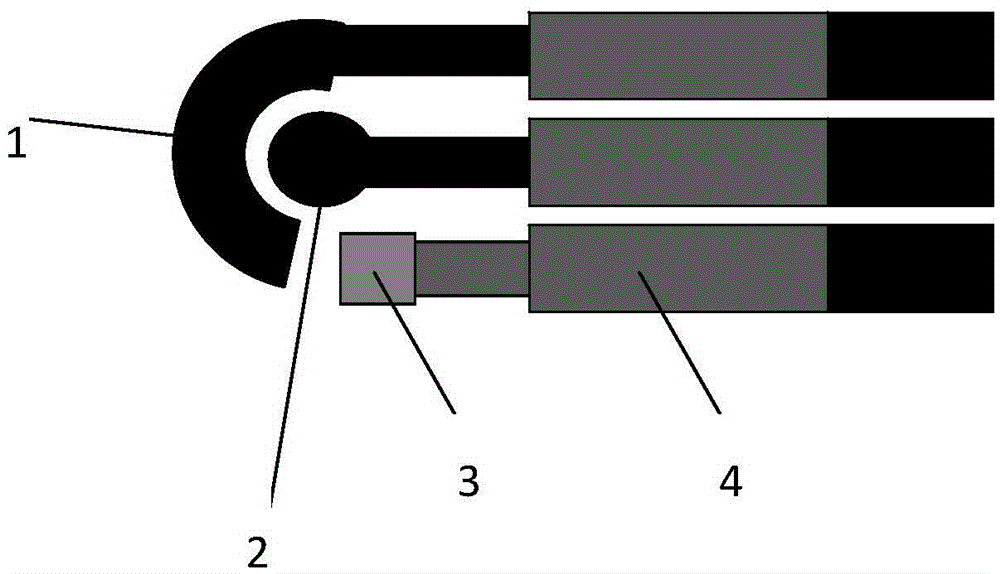A preparation method of an electrochemical sensor for residual pesticide detection
An electrochemical and sensor technology, applied in the field of electrochemical sensor preparation, can solve the problems of long analysis time, high price, and expensive BDD electrode, and achieve the effect of enhancing electron transfer and quantitative detection
- Summary
- Abstract
- Description
- Claims
- Application Information
AI Technical Summary
Problems solved by technology
Method used
Image
Examples
Embodiment Construction
[0017] In order to deepen the understanding of the present invention, the present invention will be further described below in conjunction with implementation.
[0018] A method for preparing an electrochemical sensor for residual pesticide detection, the electrochemical sensor comprises a modified electrode based on graphene, the steps are as follows:
[0019] (1) The silver ink is screen printed onto the polyvinyl chloride substrate to form a reference electrode and a connector, and dried at 45°C for 2 hours;
[0020] (2) Prepare 2.0g of carbon ink, 0.3g of graphite and 2mL of divinyl alcohol monobutyl ether / 2-butoxy acetate with a volume ratio of 1:2 to make a uniform solution, and print it on the counter electrode. Dry at 45°C for 2 hours;
[0021] (3) Disperse 15mg of graphene into 15mL of ethanol to form a homogeneous suspension, oscillate for 3h, dry at 90°C for 2h, and mix with 2.0g of carbon ink, 0.3g of graphite and 2mL of divinyl alcohol-butylene in a volume ratio ...
PUM
 Login to View More
Login to View More Abstract
Description
Claims
Application Information
 Login to View More
Login to View More - R&D
- Intellectual Property
- Life Sciences
- Materials
- Tech Scout
- Unparalleled Data Quality
- Higher Quality Content
- 60% Fewer Hallucinations
Browse by: Latest US Patents, China's latest patents, Technical Efficacy Thesaurus, Application Domain, Technology Topic, Popular Technical Reports.
© 2025 PatSnap. All rights reserved.Legal|Privacy policy|Modern Slavery Act Transparency Statement|Sitemap|About US| Contact US: help@patsnap.com

